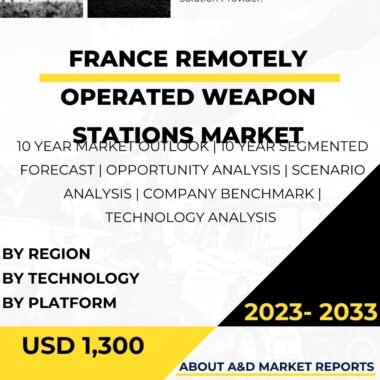Description
Remotely Operated Weapon Stations (ROWS) have emerged as a significant technological advancement in modern military operations, enhancing combat effectiveness and providing enhanced protection to soldiers. Canada, as a key player in the global defense community, has embraced ROWS as a critical element of its military capabilities. These weapon systems allow soldiers to engage targets from a safe distance, reducing the risk of casualties and empowering troops to operate more effectively in diverse and challenging environments.
ROWS, also known as Remote Weapon Systems (RWS), are integrated platforms that enable the remote operation of various weapon types, including machine guns, grenade launchers, and anti-tank missiles, from within an armored vehicle or a fortified position. This technology enhances the capabilities of military forces by allowing operators to engage hostile targets while remaining inside a protected enclosure. ROWS offer increased precision, reduced exposure to enemy fire, and improved situational awareness, making them invaluable assets for modern armies.
Canada’s involvement in the development and deployment of ROWS can be traced back to the country’s ongoing commitment to innovation and adapting to emerging threats. As early as the late 1990s, the Canadian defense industry began exploring ROWS technology to address the need for enhanced firepower and protection for armored vehicles and ground troops.
One of Canada’s prominent ROWS is the C6 GPMG Remote Weapon Station, developed by the Canadian company CMC Electronics (now part of Esterline Technologies Corporation). The C6 GPMG ROWS is designed to mount the Canadian C6 General Purpose Machine Gun, a versatile and reliable weapon used extensively by the Canadian Armed Forces. By employing the C6 GPMG ROWS, Canadian soldiers can engage adversaries with precise fire from within their armored vehicles, increasing their survivability and combat effectiveness during operations.
The implementation of ROWS has significantly impacted the tactics, techniques, and procedures (TTPs) of Canadian military operations. ROWS-equipped vehicles can provide suppressive fire and neutralize threats from a distance, limiting the exposure of soldiers to potential danger. This capability is especially crucial in urban environments, where combat occurs in close quarters and with potential civilian presence.
Furthermore, the integration of electro-optical sensors, thermal imaging, and target tracking technologies in ROWS enhances soldiers’ situational awareness, allowing them to identify and engage threats more effectively, even in low-light or adverse weather conditions. The ability to acquire targets swiftly and accurately gives Canadian forces a significant advantage on the battlefield.
In addition to ground-based applications, Canada has also explored the use of ROWS in the maritime domain. For instance, the Royal Canadian Navy has evaluated the integration of remotely operated weapon systems on naval vessels to enhance their self-defense capabilities. ROWS mounted on patrol boats and frigates enable the crew to respond to potential threats, such as fast attack boats or small unmanned vessels, from a safe distance, reducing the risk of damage to the ship and its crew.
Moreover, ROWS have been instrumental in enhancing Canada’s contribution to international peacekeeping and stabilization efforts. Deployed in United Nations missions or multinational coalitions, ROWS-equipped vehicles allow Canadian forces to engage hostile elements and protect civilians with greater precision and safety. ROWS reinforce Canada’s commitment to promoting peace and security globally while minimizing risks to its own personnel.
As with any military technology, the implementation of ROWS also raises ethical and legal considerations. The responsible use of remote weapon systems, adherence to international humanitarian law, and the need to avoid unnecessary harm to non-combatants remain paramount in the minds of Canadian military leaders and policymakers.
Additionally, the cybersecurity aspect of ROWS is crucial, as these weapon systems rely heavily on communication networks and electronic controls. Safeguarding against potential cyber threats and ensuring system integrity is imperative to prevent unauthorized access or manipulation of ROWS, which could have severe consequences on the battlefield.
As the defense industry continues to evolve, Canada remains committed to ongoing research and development in ROWS technology. Advancements in artificial intelligence and autonomous systems have the potential to further enhance the capabilities of remote weapon systems. Integrating AI-driven features, such as automatic target recognition and threat prioritization, could streamline the decision-making process and optimize the utilization of ROWS on the battlefield.
In conclusion, Canada’s adoption of Remotely Operated Weapon Stations represents a significant advancement in its military capabilities. These systems have revolutionized modern warfare by providing soldiers with increased firepower, enhanced protection, and improved situational awareness. Through the deployment of ROWS, Canada reinforces its commitment to safeguarding its military personnel while maintaining its readiness to address evolving threats in diverse operational environments. Embracing these innovative technologies allows Canada to contribute effectively to international peacekeeping efforts and maintain its position as a respected global security partner.




